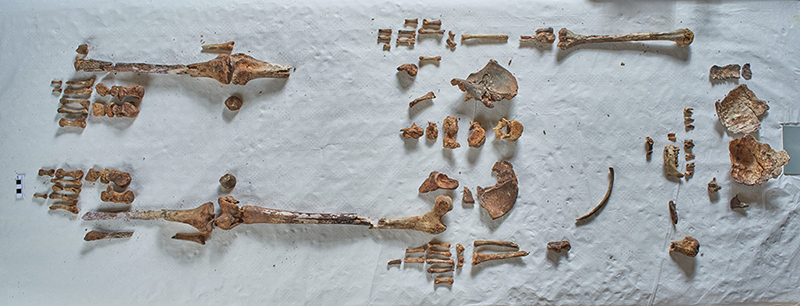
- Project brief here
- Deadline for expressions of interest: 1 March 2023
The parish church of St Mary and St Eanswythe, in Folkestone, Kent, is seeking designs for a new reliquary to house the relics of St Eanswythe. The relics were scientifically verified in early 2020 when Kent archaeological and history experts, working with Queen’s University in Belfast, confirmed that the human remains were almost certainly those of St Eanswythe. The bones are thought to be the earliest verified remains of an English saint – and the only currently verified remains of the Kentish royal dynasty.
Eanswythe is the Patron Saint of Folkestone. She was an Anglo-Saxon, Kentish Royal Saint and granddaughter of Ethelbert, the first English king to convert to Christianity under Augustine. St Eanswythe is believed to have founded one of the earliest monastic communities in England, most likely around AD 660 on the Bayle - the historic centre of Folkestone. She is thought to have died in her late teens or early 20s.
In late 2022, with the help of a grant from the Janus Foundation, the Church launched Eanswythe Found, a project that aims to ensure the appropriate long-term curation of the relics of St Eanswythe, present her story - and that of her church - through the creation of new heritage interpretation and a pilgrimage centre, utilising existing spaces within the Church.
"Eanswythe will always belong in Folkestone - and she will always be a part of this church," said Dr Andrew Richardson, FSA, from Isle Heritage. "But she needs a new 'home' within that home. The lead container in which her relics were found in 1885 is an important artefact in its own right, but it is now very fragile and no longer suitable to house her remains. So, we're looking to commission the creation of a new reliquary fit for a Kentish royal saint - one that will protect and preserve these relics for generations to come."
The reliquary needs to be housed in a new containment system, set within the shrine’s existing alcove, that ensures the security and long-term stability of the reliquary and relics. Contemporary designs are encouraged, as are those which draw upon the artistic traditions of seventh-century Kent. A full brief for the project is available here and the deadline for submission of expressions of interest is 1 March 2023. The Church and the Diocese of Canterbury welcome responses to this brief from all interested artists and designers. Once design proposals have been selected, and costs agreed, there will then follow a campaign to raise the necessary funds to allow the commissioning and production of the winning designs, as part of the fully developed project. Interested artists and designers should contact Dr Andrew Richardson via email or phone (07876 307681) for more information and a bidder’s information pack.
Eanswythe's relics mark the period that saw the very beginning of Christianity in England - and signify a continuous Christian witness in Folkestone that stretches from her life to the present day. Her remains might well have been destroyed in the Reformation (along with those of her contemporaries), had they not been hidden away in the north wall of the Church of St Mary & St Eanswythe, where they were rediscovered in 1885.
Photo by Matt Rowe
For more information, contact Anna Drew:
Anna Drew: adrew@diocant.org / 07753454586